Interior of an Eastern Orthodox Church
To diversify my architectural portfolio in this community, today I decided to publish the photos from inside a church. Orthodox Christian church. I am pretty sure that such photos have not been published here so far, because as we have often discussed this issue with danny.green, it is quite difficult to take such photos. Quite often impossible. Because in most Orthodox churches photography is forbidden.
Well, not in all.
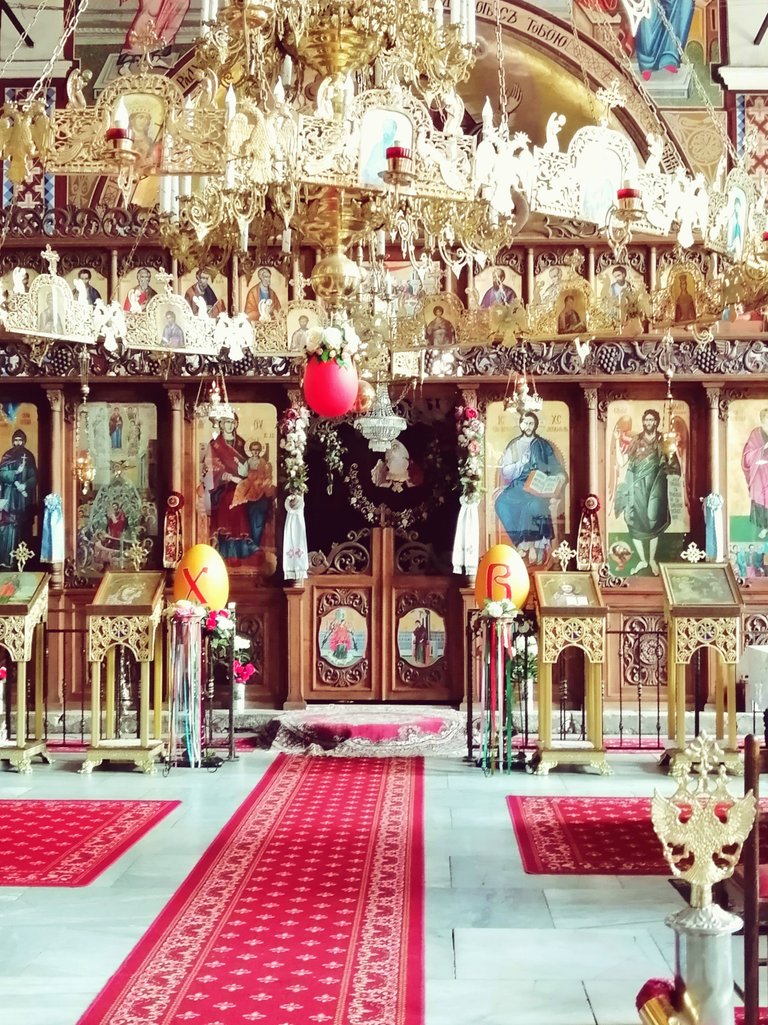
I can say that I have taken pictures in many old, valuable and mystical Orthodox churches, located in small and almost completely depopulated villages or in remote areas. In churches where you can really feel the energy and mysticism of the place. Photography was not banned there. But in cities this is usually forbidden.
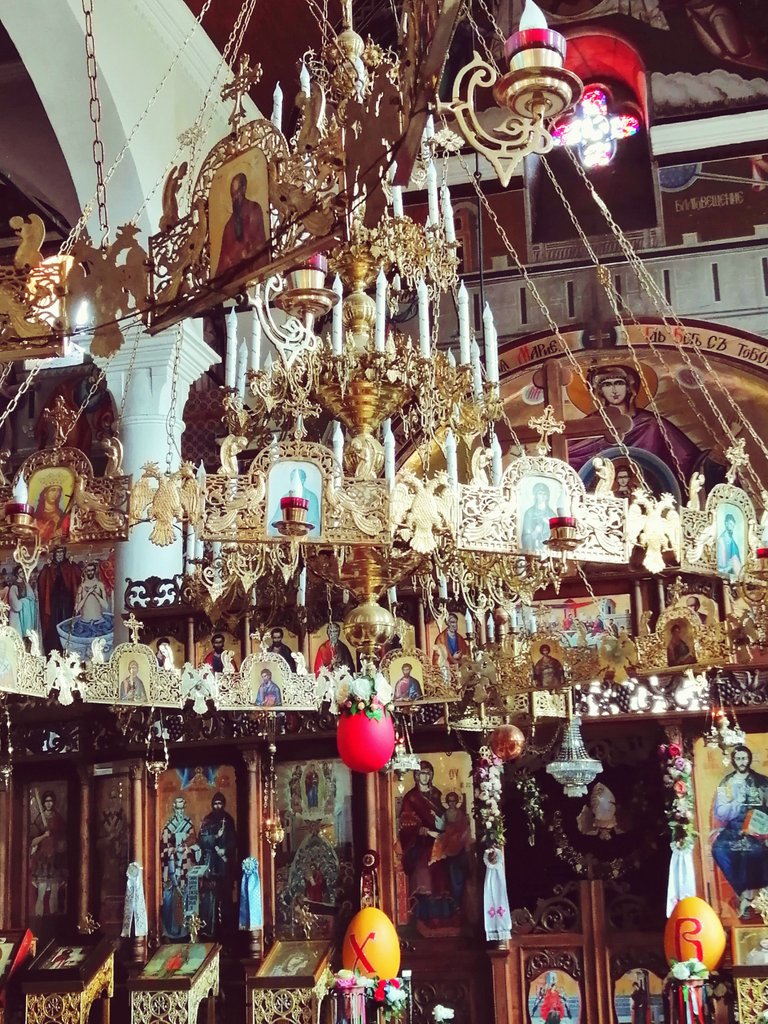
(One of the things that impresses me the most in the Orthodox Churches is the ornate and heavy chandeliers.)
Well, I have my own understanding of history and religion, and I recently read something that convinced me that these bans in the Eastern Orthodox churches were made solely for money. If you pay the fee (many times higher than the symbolic fee paid in one of the most important cathedrals in the world for me - Aachen Cathedral) you have the right to take pictures inside the church. There is nothing there that could be desecrated with photos. Nor is the Eastern Orthodox branch of Christianity holier and more important than that of Catholicism or Protestantism. It's all a matter of governance and finance policy. Nothing more. Because I have written here before that in some churches and monasteries, and especially those that are most visited, there is a ban on photography even in the yard, on the outside of the church building.
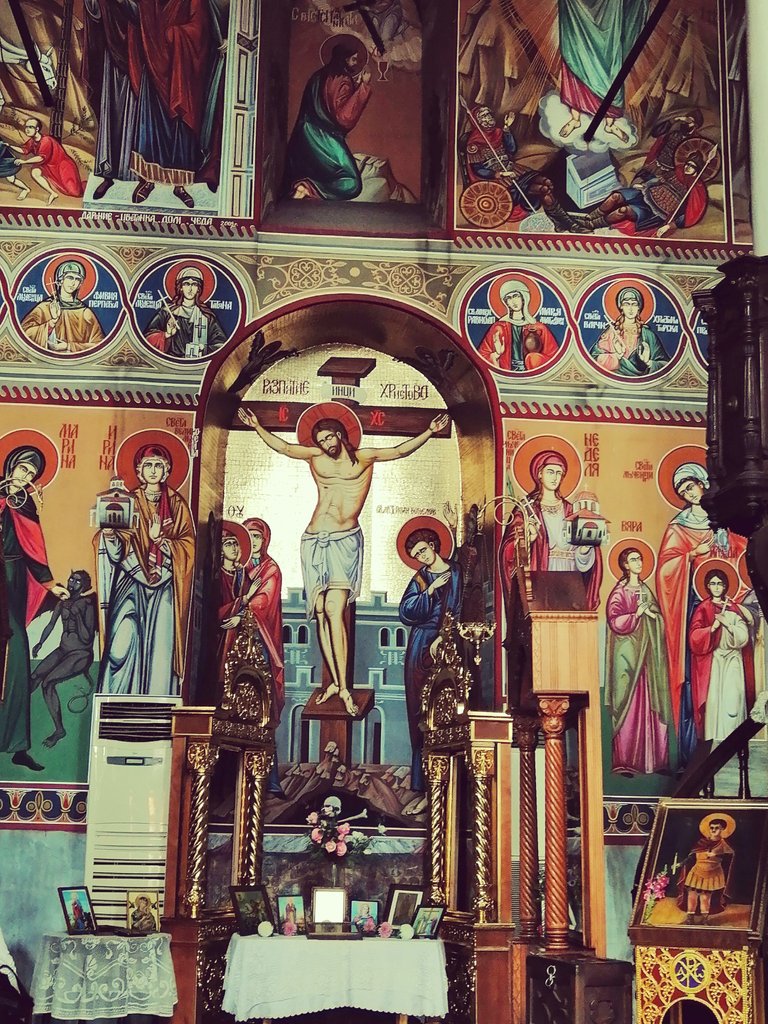
(What is characteristic of the Orthodox Churches are the numerous icons or painted biblical images and biblical scenes. The sculptors of certain saints are not typical here, but the icons.)
In my life I have visited hundreds of churches (most of them Catholic, as I have traveled and resided in Catholic countries) and I have come across units of Catholic churches where photography has been banned. In fact, I can only think of one. Of course, when I visited it, there were a lot of people in it who took pictures despite the ban. Which cannot happen in a Bulgarian Orthodox church.
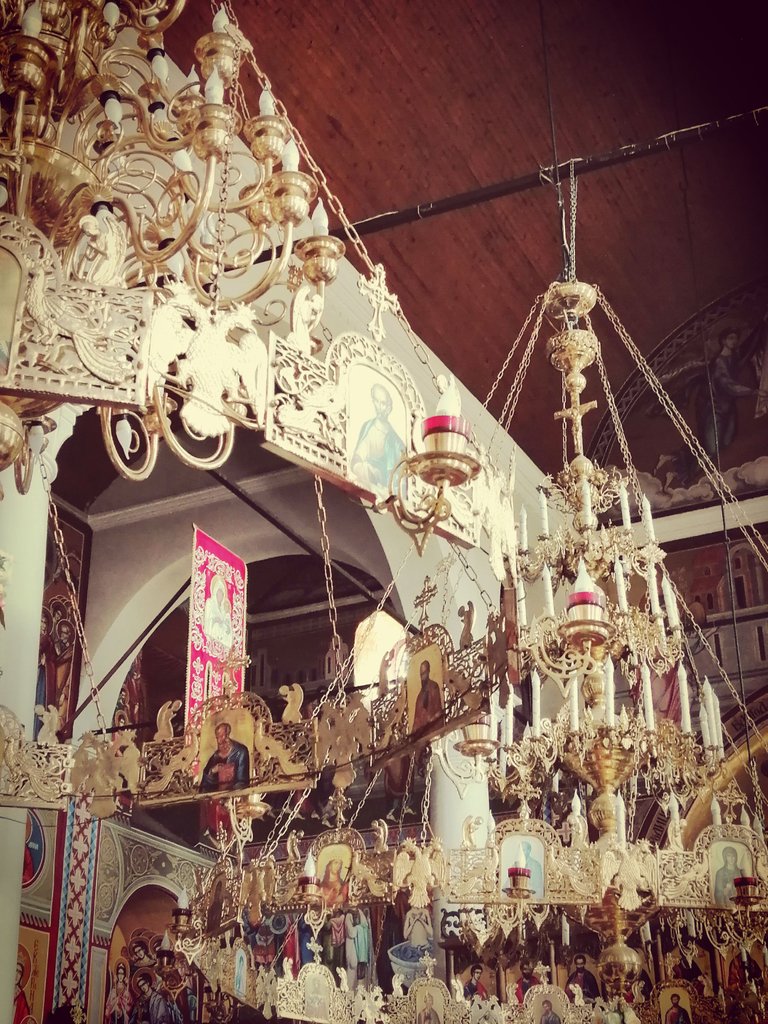
(Icons with images of saints, as well as the double-headed eagle as a symbol of the Orthodox Church in the chandeliers. This is a skillful workmanship, which I believe cannot leave anyone indifferent to its mastery.)
Because it has happened to me, when I enter a church, a church servant to literally stick to me like a shadow to watch what I do.
Thus, instead of praying in peace in the temple, a person will rather feel like a criminal, or like a person from whom they can ask for money at any time. But as I said, not in absolutely all churches. Only in cities.

(I find this Eastern decoration rather lovely.)
That's why it sometimes even made me refuse to enter certain churches. Knowing or anticipating the hostility of the servants inside.
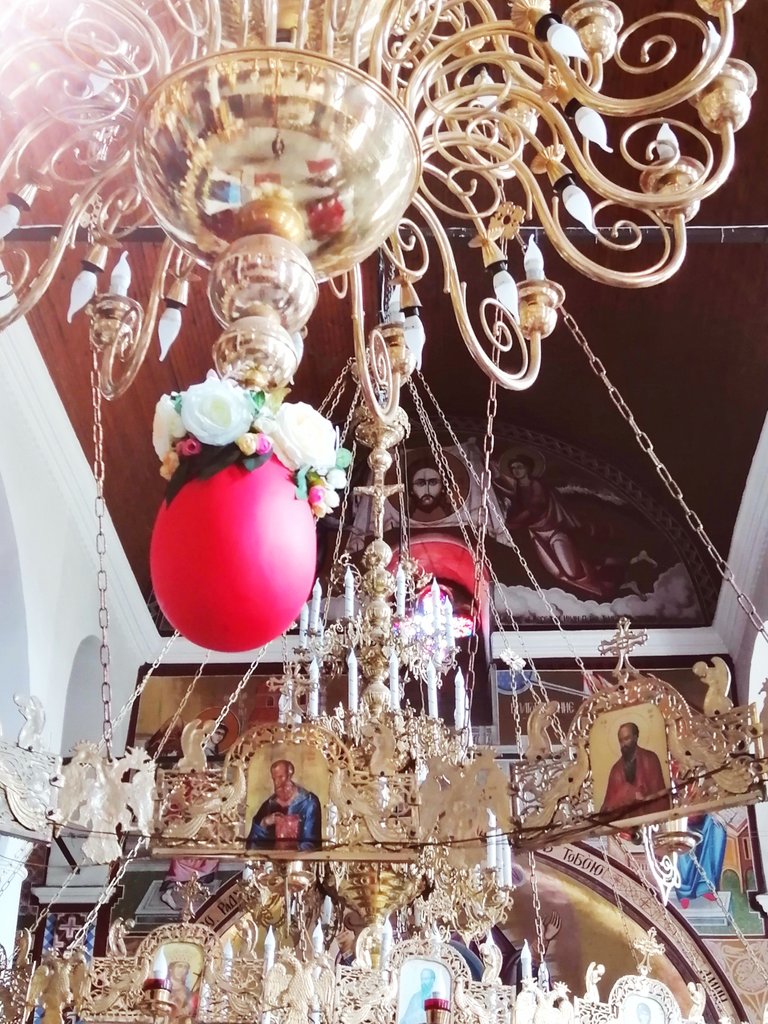
(I don't know if they keep it all year. Because these photos were taken at the end of May.)
In addition, the temple buildings attract me in general with their mysticism and the assumption that these are sacred buildings that keep secrets. Entering such a church, where there are such prohibitions, one expects to see something unusual inside. Something very valuable, something mystical.
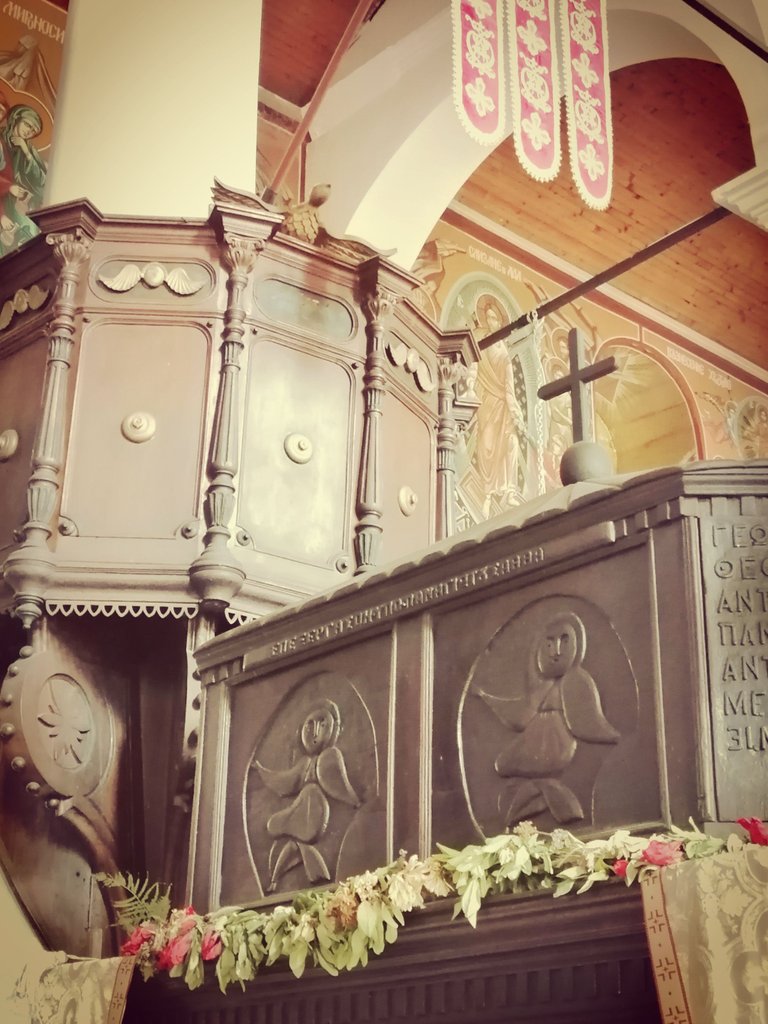
(This wooden pulpit with seraphim (quite often depicted in Orthodox churches) actually looks a little unusual to me. Too Catholic. But that can only be my feeling.)
This, in turn, made me enter these buildings.

(An entire wall painted with icons - also typical of Orthodox churches.)
But then I enter this building, this temple, and I find that there is nothing mystical about anything inside. Nothing different from the other Orthodox churches I have visited so far.
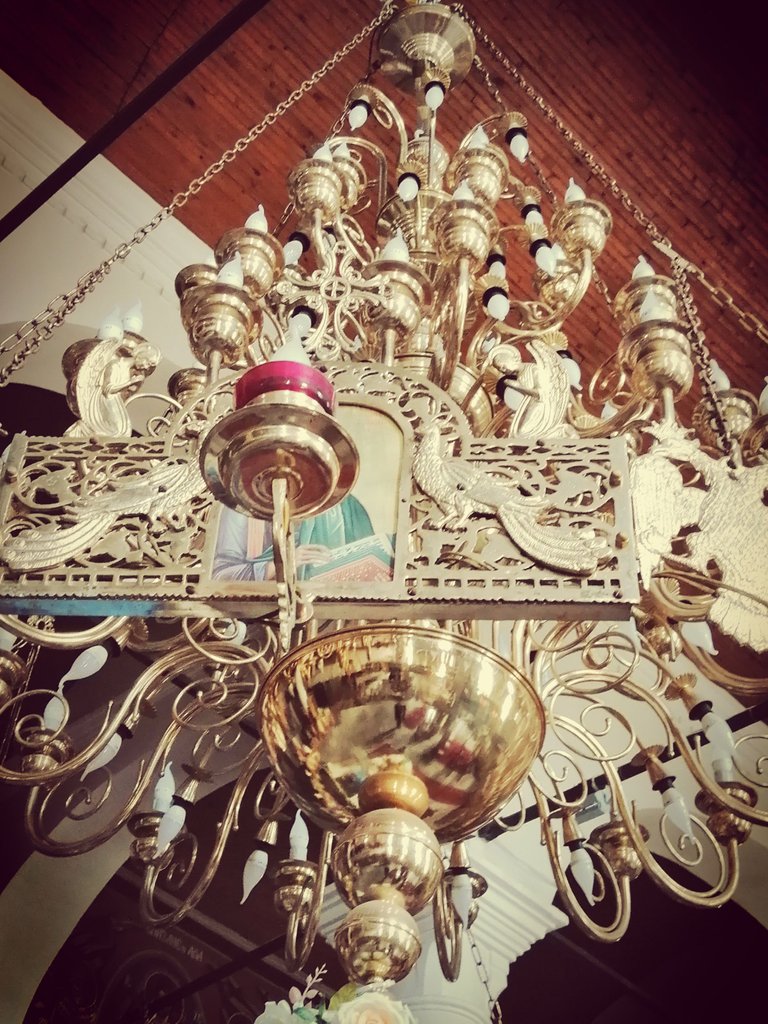
(Another chandelier.)
And quite often I am disappointed. Even almost always.
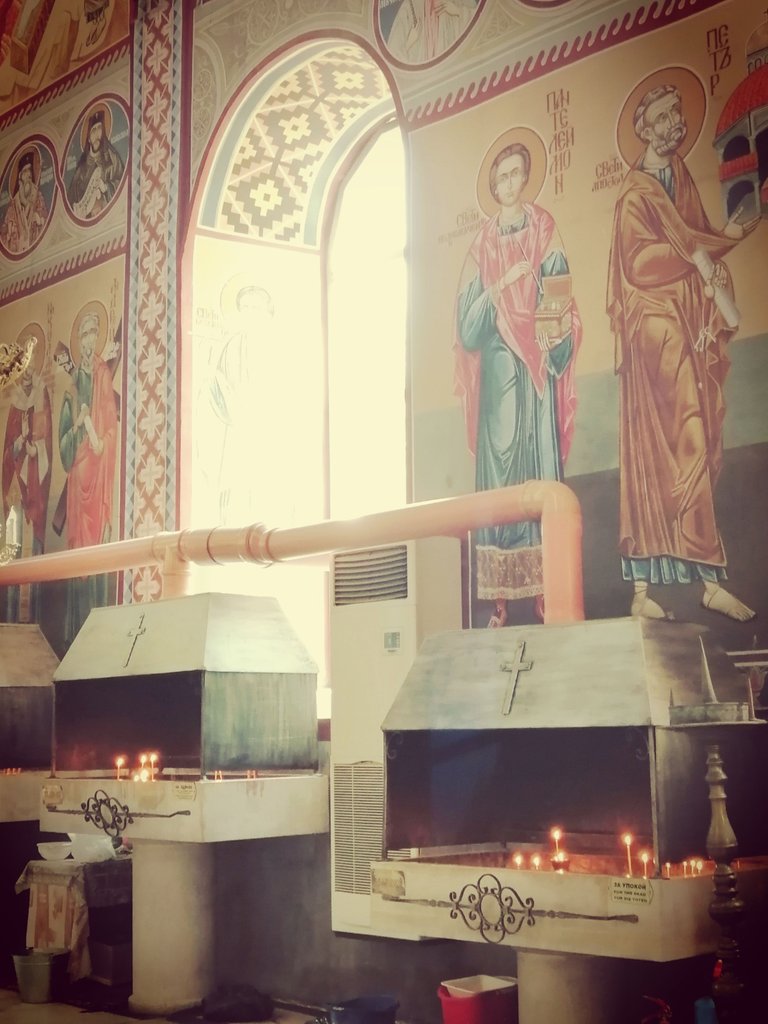
(These are modern candlesticks - places where candles are lit for health or for a deceased person. And I must tell you that in the past there was no need for such complex installations, when the quality of the candles was good.)
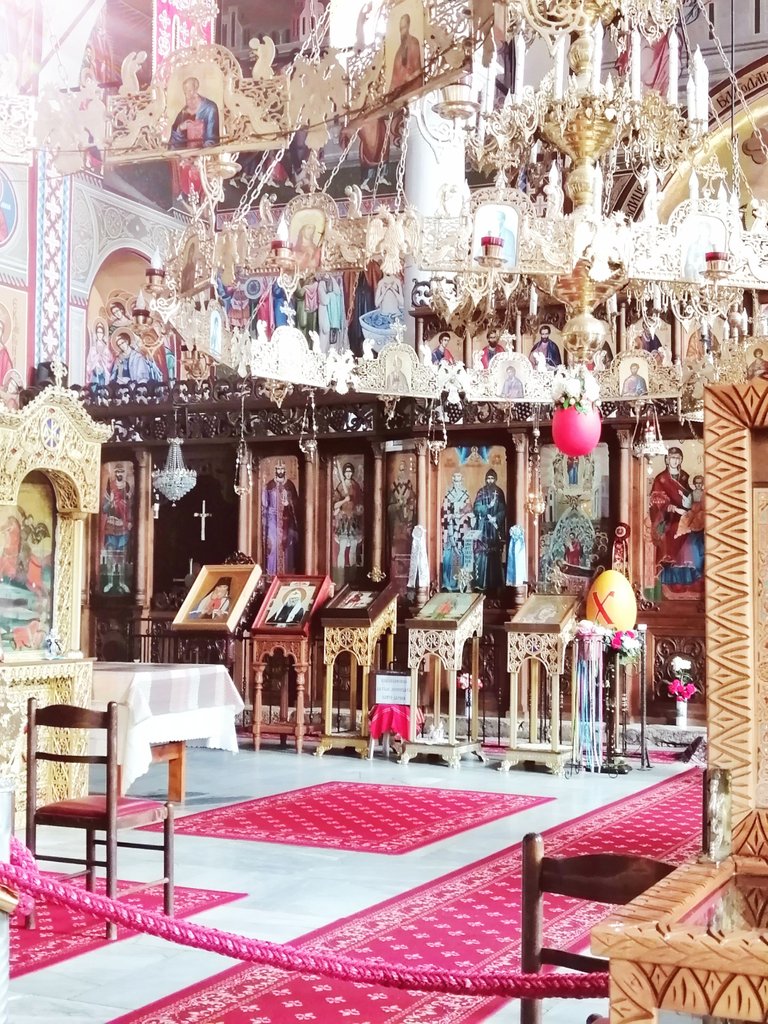
(That's part of the iconostasis behind of the chandeliers - the traditional wall of icons in the Eastern Orthodox churches.)
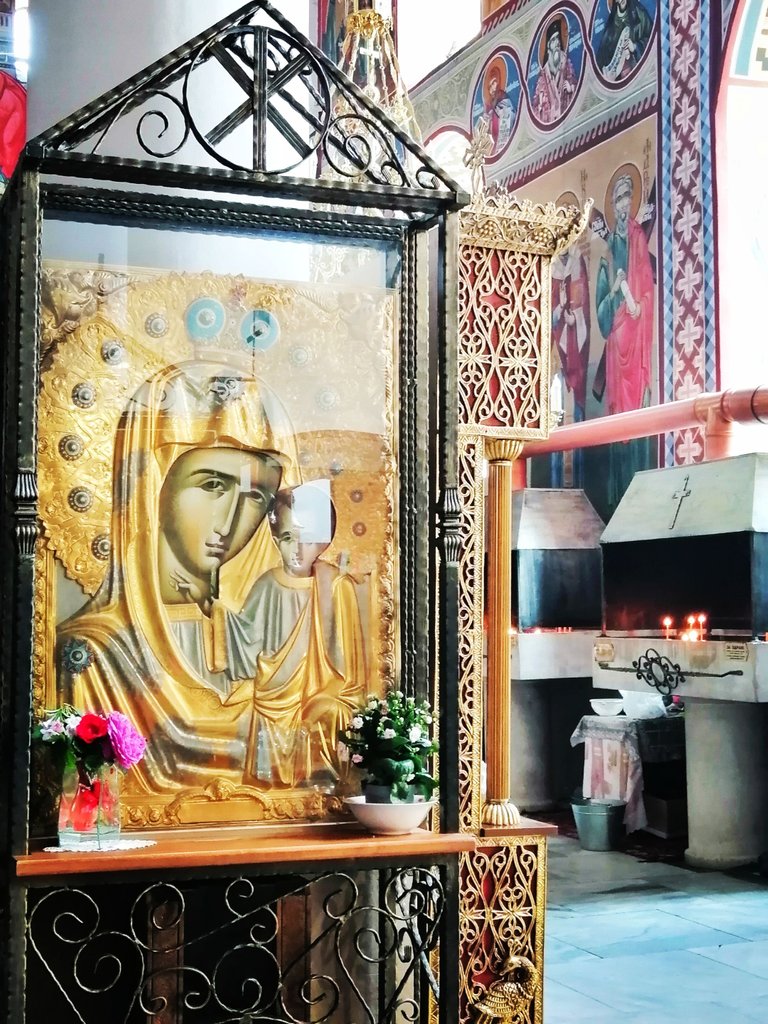
(Icon of the Mother of God)
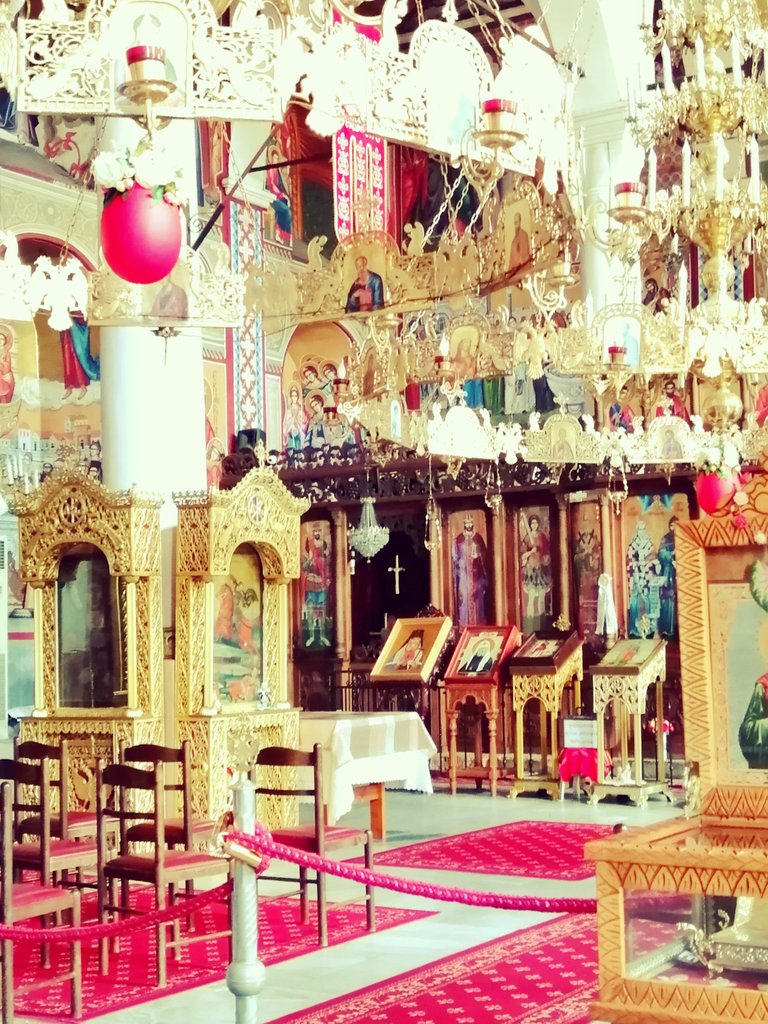
The photos are from the Church "Dormition of Theotokos" in Nessebar. The church dates from 1873.
Copyright: @soulsdetour
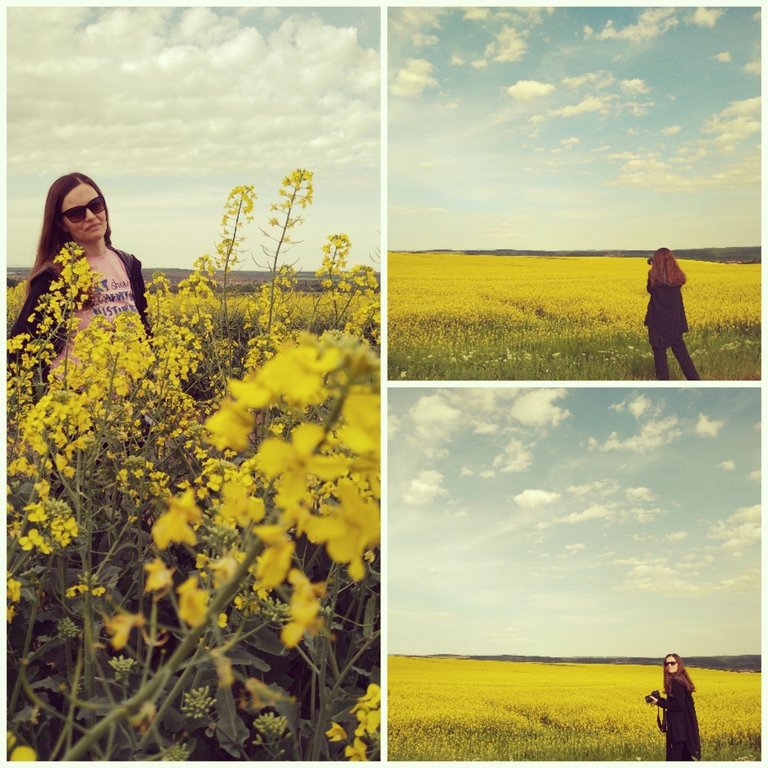 | Soul's Detour is a project started by me years ago when I had a blog about historical and not so popular tourist destinations in Eastern Belgium, West Germany and Luxembourg. Nowadays, this blog no longer exists, but I'm still here - passionate about architecture, art and mysteries and eager to share my discoveries and point of view with you. |
@tipu curate
Upvoted 👌 (Mana: 25/45) Liquid rewards.
Thank you very much!😊
Thank you very much!😊
Warm greetings dear @soulsdetour. Amazing! I want to first congratulate you for achieving the opportunity to be up close and personal with the inner sanctum of an Orthodox Christian church. This is definitely a much-welcomed addition to your already impressive architectural portfolio, adding immense value to the interesting stories you've published in the past.
It's a terrible shame that some holy landmarks take advantage of photography for monetary or political gains. Not that taking pictures would desecrate their sacred elements, yet it's your humble way of capturing memorable legacies through digital images. I'd also understand your utter frustration due to the intimidation caused by church servants who are paranoid of your actions, even though your intentions are pure. Can we blame them?
I also remember your tremendous fascination with ancient stone buildings from your previous posts. Do these raw materials mystify you too? Aside from churches, what other monuments offer you a sense of mysticism? 😊
Dear @storiesoferne, yes, stones and stone buildings are, in my opinion, the most mysterious objects. And besides churches and monasteries, other bearers of secrets, in my opinion, are castles. Because who could have been more devoted to the secrets in the past, if not the nobles and the church administration? In union with each other or against each other. 😃 At least that's what I think.
As for the government of the Orthodox religion and church, I really do not even know how to formulate my attitude more leniently in this case... but I am glad that my photos, as well as my personal story were well received. And I thank you again for your always kind and encouraging words. 😊
With immense pleasure always! Oh yeah, castles, especially the medieval types, would surely be an interesting bunch of buildings to explore for mystical experiences as well. Mysterious elements and hidden secrets simply add to a site's architectural allure. Are there plenty of castles in Bulgaria? If I'm not mistaken, you have not featured one yet in this community, right? I'd definitely love to immerse in your personal stories about these ancient landmarks dear @soulsdetour. 😊
Exactly the Medieval castles 😊 And especially the Templar ones.
Well, I would not say that there are castles in Bulgaria at all. There are several fortresses and several, but not many preserved palaces. I visited one of them last year and I must say that I did not take many photos there. There was nothing that really impressed me. As I would be impressed by a Belgian castle, for example. And that's why maybe I don't know this country in detail (but collecting material for my posts in your community, I still get to know it 🙂).
There are things that impress and attract me, such as the few remaining old churches that were not destroyed by the Ottomans, as well as the old beautiful houses of the rich people that were not destroyed by the communists. And also, some of the modern buildings. But when it comes to mysteries and secrets, I think we should look to the West, I mean Western Europe.
Well, if that's the case, you'll most probably have to explore these medieval castles elsewhere then, by traveling to other countries holding lots of mysteries and secrets like Western Europe. But I'm pretty sure Bulgaria has its own impressive collection of architectural treasures to share with the world. In fact, you have done excellent work by showcasing some of them in our beloved community. 👍
May your authentic passion for this industry lead you to better roads ahead, perhaps to some interesting sites, landmarks, and monuments that you never thought existed in your own country. "Seek, and you shall find", as one inspiring saying goes. Stay awesome as always dear @soulsdetour! 😊
Wow, thank you, dear @storiesoferne! I really don't know what else to say this time 😊
Except that I learned a lot through your community - through yours, through mine, and through the posts of the other members, giving me the incentive to seek and learn even more. Thank you for that!
This is the first time that I have seen the interior of an Eastern Orthodox Church (in photos). Here, Christian churches use few decorations than this Eastern Orthodox Church, can you confirm if most Eastern Orthodox Churches are like this one? (in terms of interior decorations).
Hi @afterglow, the answer to this question is supposed to be easy - yes or no. But I don't think so 😄. Yes, most churches have the same type of "furniture" - traditionally they have this iconostasis, have many icons, many paintings, have a pulpit, seats for parishioners, candlesticks, chandeliers and other things. But how richly decorated they are and what exactly these decorations look like... each church looks different. The one I show here is quite richly decorated, quite crowded with details and ornaments. I'm not sure I've seen such rich decoration before.
Thank you for the response. Have a nice day ahead (^_^)
Hey @soulsdetour! You are right, this has been discussed a lot. It is difficult to take photos inside Orthodox churches. It is not always possible to get permission to take pictures. I thought that photography was forbidden only in my country, but now I understand that it is global (thanks to our dialogue). I learned that these are actually only conditional rules. However, the abbots do not like it when they come in and take pictures. But Orthodoxy does not forbid it.🤷♂
You are right, going inside you will find that "there is nothing mystical". But I really liked the interior decoration of the church "Dormition of Theotokos" in Nessebar. This is an amazing place of worship. Nice photos and interesting post. Thanks for sharing 😊
Drone photography was recently banned in the area of the most famous, largest and most visited monastery in Bulgaria . In the whole area! And I have also met the ban on photographing the interior of Orthodox churches in Romania and Greece so far. It is really very sad when one realizes the greed of the clergy.
Anyway. The church I'm showing is really interesting. It is the only functioning church in the Black Sea peninsula town of Nessebar, which was otherwise famous for its numerous churches in the Middle Ages.
Thank you for stopping by, @danny.green!
Sometimes I am amazed at such behavior on the part of the Orthodox Church. But sometimes I was allowed to take pictures. Apparently it depends on the local "church authority". Although when people like us take pictures, we are doing a good deed. I believe that the display of church interior decorations does not in any way contradict religious customs, but, on the contrary, popularizes religion. But we have what we have...🤷
Thanks for what you do!
Photography plays an extremely important role in many ways.
There was once a lithographer who toured and painted Belgian-Luxembourgish castles. Then many buildings were restored according to his drawings. Photography can now play such a role (apart from what you show in some of your posts - models of various buildings, which are extremely time consuming. As was the painting, by the way...)
Have a successful week!🙂
Congratulations @soulsdetour! We're delighted to specially curate your awesome publication and award it RUNNER-UP in Architecture Brew #62. More power!
Thank you for subscribing to Architecture+Design, an OCD incubated community on the Hive blockchain.